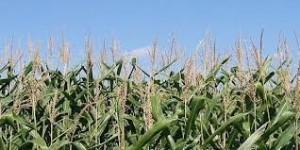America is guilty of child abuse and should be charged, and sentenced. For the past 35 years, U.S. agriculture has operated under “cheap food” policy, while childhood obesity has gone primetime in every home, school, mall, and workplace. Since obesity hit mainstream America, it has become more than a cosmetic concern. Obesity is a social problem that continues to affect the health of America’s kids. Parents and lawmakers must embrace the fact that childhood obesity is an immense problem in the United States, and according to the CDC, one in three kids, and teens are overweight or obese. It is the leading source of health complications such as heart disease, high  cholesterol, diabetes, and high blood pressure. This trend continues to affect many kids and teens as excess weight threatens their future and their quality of life.
cholesterol, diabetes, and high blood pressure. This trend continues to affect many kids and teens as excess weight threatens their future and their quality of life.
Current Agriculture policy does little to promote the production of diverse healthy foods such as fruits and vegetables. The current policy contains many incentives that provide subsidies for farmers to produce less fruits and vegetables, which has lead to the overproduction of corn, soybeans, and refine grain. Did you know the United States is the world largest producer of corn and soybeans? It is the most important plant grown in America. Corn is the backbone of our agriculture and most of the farming fields are dedicated for corn. America farmers produce over 20 pounds of soy oil and 93 percent of consumers are Americans. A kernel of corn, within its horny hull, is filled with white raw starch called the endosperm and it is used to manufacture products like bran, which is fed to cattle. The germ of the corn contains corn oil and after the oil is squeezed out it is processed to manufacture soaps, glycerin and nitroglycerin. Further refined, it produces salad and cooking oils.. Moreover, Corn syrup is used in candies, ice cream, baking, and curing tobacco. Corn sugar is used in diets of infants and  diabetics. It is also responsible for the edible starch, which goes into puddings, jellies and candies. The overproduction of these crops has lead to the consumption excess calories, as well as the production of inexpensive snacks, which are nutritionally poor. Besides, several studies have been conducted and demonstrate that individuals gain weight when their environment promotes foods high in sugar and fat. Therefore, overproduction of corn could be considered the culprit responsible for childhood obesity. The wide availability of unhealthy crops contributes to the obesity epidemic. Did you know most Americans consider corn a vegetable? But it is not a vegetable. Corn is actually a starchy grain like white potatoes. Starchy vegetables like potatoes, corn and peas are included in the “Whole Grain Foods” because they contain more carbohydrate.
diabetics. It is also responsible for the edible starch, which goes into puddings, jellies and candies. The overproduction of these crops has lead to the consumption excess calories, as well as the production of inexpensive snacks, which are nutritionally poor. Besides, several studies have been conducted and demonstrate that individuals gain weight when their environment promotes foods high in sugar and fat. Therefore, overproduction of corn could be considered the culprit responsible for childhood obesity. The wide availability of unhealthy crops contributes to the obesity epidemic. Did you know most Americans consider corn a vegetable? But it is not a vegetable. Corn is actually a starchy grain like white potatoes. Starchy vegetables like potatoes, corn and peas are included in the “Whole Grain Foods” because they contain more carbohydrate.
The childhood obesity epidemic has no uniformity across America, but is prevalent in impoverished communities. Children from low-income families are affected disproportionately, because of the lack of financial resources, as well as, lack of access to quality food. This often means that the people in America who live in the most poverty-dense counties are those most prone to obesity. Most obesity counties have a poverty rates greater than 35 percent. Poor counties in states across the country have obesity rates 145 percent greater than wealthy counties.
I would argue that people typically make rational food choices, but the U.S. farming policies support unhealthy calories, which are affordable for families on a fixed to low-income. In order to ensure poor Americans access to food, the federal government must impose new agriculture policies that encourage farmers to grow more fruits and vegetables. The government may be reluctant to change the agriculture policy , because of all the financial  reasons not to change. I challenge you to just think what America’s playgrounds, schools, and malls would resemble, if the government would subsidize healthy crops like fruits and vegetables. Shifting the United States agriculture policies priorities to provide agricultural subsidizations for U.S. farmers to grow fruits and vegetables domestically would make healthy crops more affordable. The American Heart Association, estimates 30 million individuals in America suffer from hunger and food insecurity each year. By providing subsidizations for bananas, apples, oranges, grapes, broccoli, squash, zucchini, tomatoes, and green vegetables, could make healthy foods more affordable especially in homes with limited financial resources. Just this one adjustment would have a profound effect on poor families ability to obtain healthier foods. Domestically grown fruits and vegetables would control cost, by eliminating or lower shipping cost.
reasons not to change. I challenge you to just think what America’s playgrounds, schools, and malls would resemble, if the government would subsidize healthy crops like fruits and vegetables. Shifting the United States agriculture policies priorities to provide agricultural subsidizations for U.S. farmers to grow fruits and vegetables domestically would make healthy crops more affordable. The American Heart Association, estimates 30 million individuals in America suffer from hunger and food insecurity each year. By providing subsidizations for bananas, apples, oranges, grapes, broccoli, squash, zucchini, tomatoes, and green vegetables, could make healthy foods more affordable especially in homes with limited financial resources. Just this one adjustment would have a profound effect on poor families ability to obtain healthier foods. Domestically grown fruits and vegetables would control cost, by eliminating or lower shipping cost.
Economists, farmers, and public health experts have argued this complex topic, whether the current farming policies are indeed feeding the obesity epidemic in America.
I feel, we need to look at broad policy changes to transform our obesogenic food supply into one that promotes excellent health and a healthy weight. As parents, health experts, and farmers; we must provide a strong social support of dietary interventions for those involved in preparing food especially at schools because currently 21 percent of America’s schools do not provide fresh fruits and non-fried vegetables in vending machines, school stores, or snack bars.



8 pings
Skip to comment form